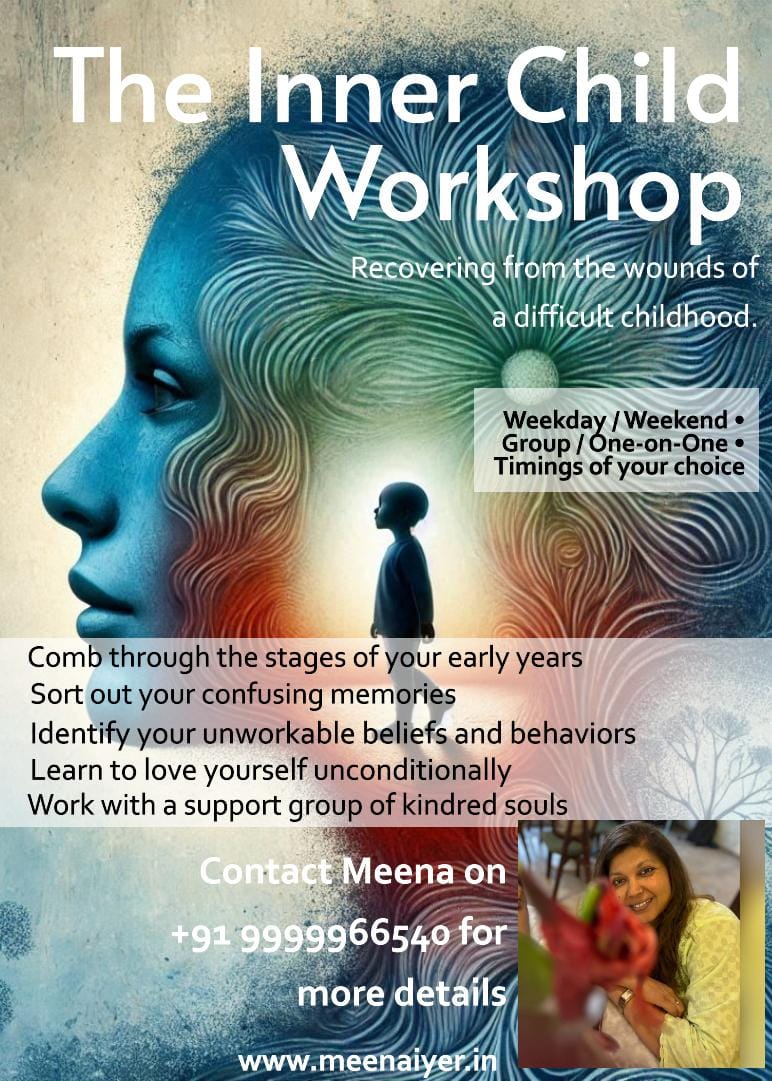How Inner Child Healing Helps You Respond Instead of React
Have you ever found yourself reacting impulsively in certain situations—snapping at a loved one, feeling overwhelmed by criticism, or shutting down emotionally? These reactions often stem from unresolved childhood wounds. When you heal your inner child, you gain greater emotional awareness, allowing you to respond with clarity and intention rather than reacting from a place of past pain.
The Difference Between Reacting and Responding
Reacting is instinctive. It happens automatically when something triggers an emotional wound. For example:
- You receive constructive criticism at work and immediately feel defensive or ashamed.
- Your partner expresses a concern, and you lash out or withdraw instead of engaging in discussion.
- A friend cancels plans, and you feel instantly rejected or unimportant.
Responding, on the other hand, is a conscious choice. It allows you to pause, assess the situation, and choose a reaction that aligns with your values and emotional well-being. It also supports you to speak with what you desire as an impact and response. Instead of letting past wounds dictate your behavior, you learn to engage with the present moment thoughtfully.
How Childhood Conditioning Shapes Emotional Reactions
Your early experiences shaped the way you handle emotions. If you grew up in an environment where your feelings were dismissed, criticized, or invalidated, you may have developed automatic responses to protect yourself. Common childhood experiences that influence adult reactions include:
- Frequent criticism → Leading to a fear of judgment and defensiveness.
- Emotional neglect → Causing difficulties in expressing or identifying feelings.
- Harsh discipline → Instilling perfectionism and fear of making mistakes.
- Unpredictable caregivers → Resulting in anxiety and hypervigilance.
These emotional responses within your body and mind dictate the way to respond to difficult people and situations. These learned behaviors don’t disappear in adulthood—they show up in your relationships, work, and self-perception. The good news is that inner child healing can help you break these patterns.
Steps to Shift from Reacting to Responding
1. Identify Your Triggers
Triggers are situations that bring up strong emotional reactions. By recognizing what triggers you, you gain insight into the wounds you need to heal. Ask yourself:
- What situations or words make me feel instantly defensive, anxious, or upset?
- Do these feelings remind me of past experiences?
- How do I typically react, and does this reaction serve me?
For example, if someone ignores your message and you immediately feel rejected, this could stem from childhood experiences where your feelings were overlooked or dismissed.
Connect with Your Inner Child
Your inner child is the part of you that still holds onto past pain. Healing begins when you acknowledge and nurture this part of yourself. A simple way to do this is through inner dialogue:
- “I see you. I know you’re feeling hurt right now.”
- “You are safe. You don’t have to react in the same way anymore.”
- “I love you, and I am here for you.”
By offering reassurance, you create a sense of safety within yourself, reducing the need for automatic reactions.
Practice Self-Regulation Techniques
When you feel triggered, instead of immediately reacting, use self-regulation techniques to calm your nervous system. Here are some;
- Deep Breathing: Inhale for four counts, hold for four, and exhale for six.
- Grounding Exercises: Focus on your senses (what you see, hear, feel, taste, and smell) to bring yourself back to the present.
- Body Awareness: Notice where you feel tension and consciously relax those areas.
- Pausing Before Reacting: Give yourself permission to take a moment before responding.
Reframe Negative Self-Talk
Often, your inner critic reinforces old wounds. If you grew up hearing things like “You’re too sensitive” or “You’re not good enough,” those beliefs might still influence your reactions today. When you catch yourself engaging in negative self-talk, replace it with a more compassionate statement:
- Instead of “I’m overreacting,” try “My feelings are valid, and I can process them calmly.”
- Instead of “I’ll never get this right,” try “I am learning, and growth takes time.”
By changing the way you speak to yourself, you create space for more measured, thoughtful responses.
Set Healthy Emotional Boundaries
Many emotional reactions stem from a lack of boundaries. If you were raised to put others’ needs before your own, you might struggle to assert yourself. Learning to set boundaries allows you to respond instead of react:
- Say no without guilt. Your needs are just as important as others’.
- Communicate expectations clearly. Let people know what is acceptable and what is not.
- Walk away from toxic situations. Protecting your peace is a form of self-respect.
Cultivate Mindful Awareness
Mindfulness helps you stay present, making it easier to recognize when you’re about to react emotionally. Simple mindfulness practices include:
- Observing your thoughts without judgment.
- Checking in with your emotions throughout the day.
- Engaging in activities that bring you into the present moment, such as journaling or meditation.
In Summary
Healing your inner child doesn’t mean erasing your past—it means understanding how your past influences you so you can make better choices in the present. When you nurture your inner child and practice self-awareness, you move from reacting impulsively to responding intentionally. Over time, you develop greater emotional resilience, deeper self-compassion, and healthier relationships with yourself and others.
By making small, mindful shifts, you give yourself the gift of freedom—the freedom to choose how you respond, rather than being controlled by old wounds. And in that choice lies true healing.
Meena Iyer
Psychologist, NLP Master Practitioner, Inner Child Healer, Sobriety Coach, Breathwork Facilitator.
https://www.meenaiyer.in/

Leave a Reply